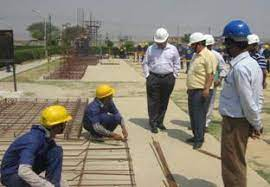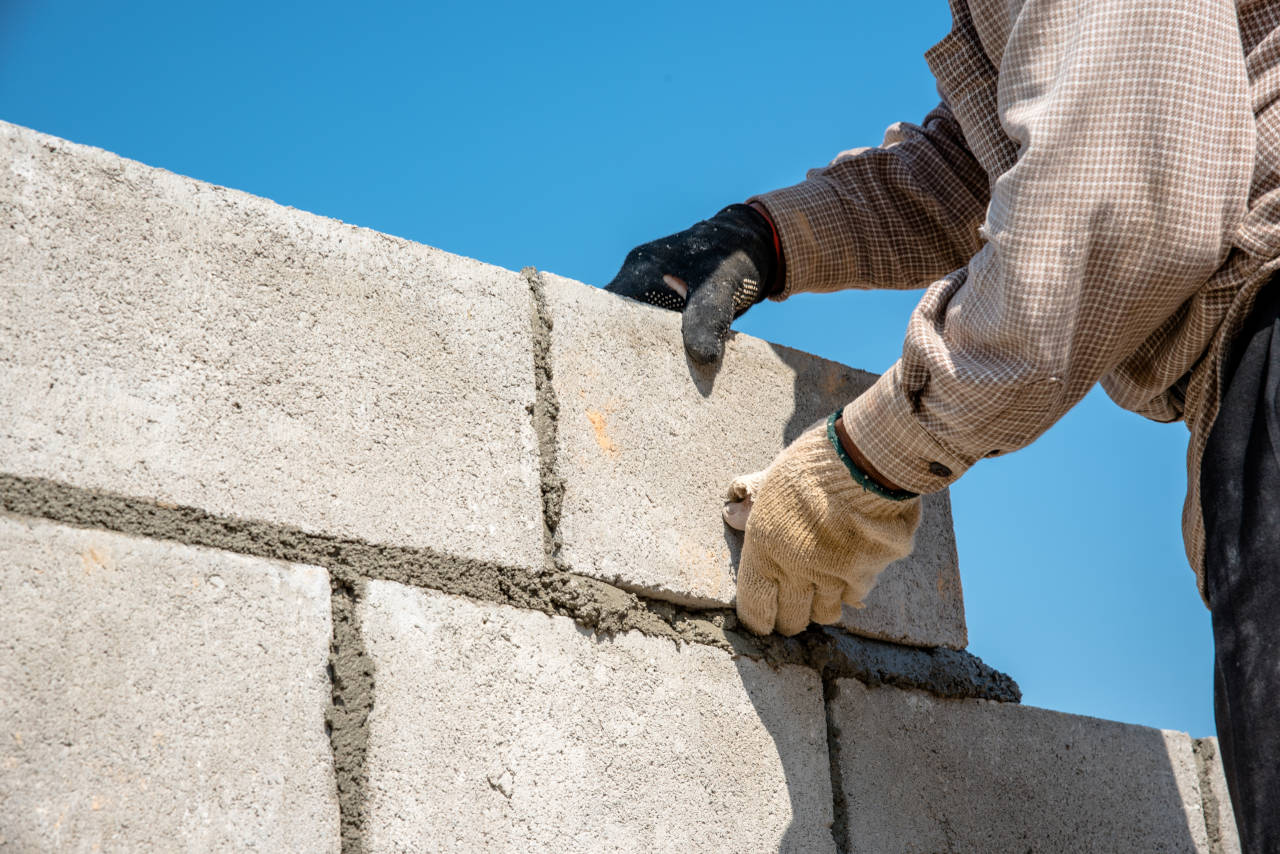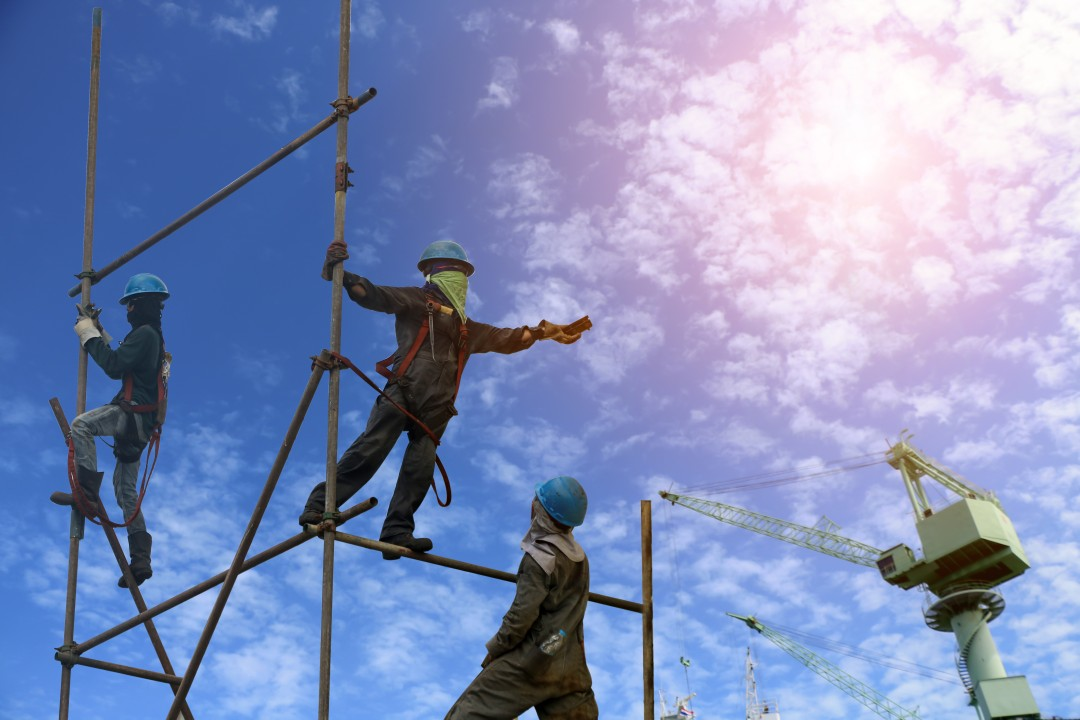Rigger – Structural Erection (6 month course)
Rigger – Structural Erection click here
Brief Job Description
The job role is responsible for providing support in heavy lifting operation of structural steel components/
assemblies by cranes or suitable equipment’s. Individual in this job role erects steel units by shifting and
placing them in to their position in order to construct steel structures in construction projects. Moreover,
the job role erects staging which consists of heavy steel frames/ components as a part of formworks of
heavy RCC structures.

Personal Attributes
The individual is expected to be physically fit and should be able to work across various location and
height withstanding extreme condition while working. The individual should be able to implement and
maintain safety practices as applicable to the nature of work. The job holder should preferably be free from vertigo problem, cardiovascular diseases as the nature of work involves handling heavy loads and working at height.
Provide support in heavy structural steel lifting works
Description
This unit describes the skills and knowledge required to provide support in heavy structural steel lifting
works
Scope
The scope covers the following :
Shift structural steel assemblies as per instruction
Carry out preparatory work prior to start lifting operations
Provide support in heavy lifting work
Elements and Performance Criteria
Shift structural steel assemblies as per instruction
To be competent, the user/individual on the job must be able to:
PC1. select and use appropriate rigging gears required for heavy material shifting for structural
steel assemblies/ components at construction site
PC2. anchor structural steel components/ units to the right locations and hook up with the
prescribed lifting equipment by using slings, shackle, rope or lifting hooks and secure
properly against slipping or deflection as per instruction
PC3. tie down the structural steel assemblies units to the transporting vehicle using chains,
binders, belts etc
PC4. remove all bracing, packing and protective edges from the units and prepare the structural
steel unit for unloading by equipment as per instruction
PC5. unload steel components/ assemblies safely under supervision at the specified location
Carry out preparatory work prior to start lifting operations
To be competent, the user/individual on the job must be able to:
PC6. check for availability of lifting gears, tools and tackles prior to start lifting works
PC7. inspect lifting tools and tackles for their safe working conditions
PC8. check that the lifting equipment and steel components or assembly are placed well away
from any overhead power lines or service lines
PC9. check for damage like distortion, breaking of joints etc. in structural steel assemblies or
components and report immediately if any damage observed
PC10. check work location for barricading, presence of signage and availability of required ppes,
provided as per standard practice
PC11. prepare base for lifting equipment and load to be lifted as per requirement and instruction
from the superior
PC12. work with respective equipment operator in order to grade and prepare the base for lifting
equipment and units to be lifted
PC13. provide adequate level, compactness and well drainage to the prepared base
Provide support in heavy lifting work
To be competent, the user/individual on the job must be able to:
PC14. attach slings, lifting belts to the right location of the load prior to lifting
PC15. attach shackle, hooks to the load as per requirement
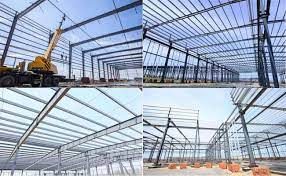
PC16. check tightness and locking of shackle, hooks to ensure safety
PC17. attach tag line to the load at required locations
PC18. control position of suspended loads using tag line according to the signals or instructions
PC19. ride on girders or other structural-steel members to position load to be erected and guide
them into position
Knowledge and Understanding (KU)
The individual on the job needs to know and understand:
KU1. standard procedure for construction rigging works
KU2. safety rules and regulation for handling and storing relevant rigging tools, equipment and
materials
KU3. personal protection including the use of relevant safety gears & equipment’s
KU4. service request procedures for tools, materials and equipment’s
KU5. basic principles of measurement, geometry and arithmetic calculation
KU6. conversion of units of linear measurements
KU7. units of measurements
KU8. hand tools required to carry out material lifting activity and their use
KU9. rigging tools required to lift structural steel sections or assemblies and their use
KU10. required nature of base level and compaction required for equipment during lifting
KU11. technique of guiding suspended object trough tag lines to location of erection
KU12. basic concept of working mechanism of load lifting equipment’s like cranes winches, etc.
KU13. specification of lifting tools and tackles as per load lifting requirement
KU14. interpretation of gestures/ signals by signalman during load lifting work
Generic Skills (GS)
User/individual on the job needs to know how to:
GS1. write in one or more languages, preferably in the local language of the site
GS2. read one or more language, preferably in the local language of the site
GS3. read various, sign boards, safety rules and safety tags , instructions related to exit routes
during emergency at the workplace
GS4. speak in one or more language, preferably one of the local language at site
GS5. listen and follow instructions given by the superior
GS6. orally communicate with co-workers regarding support required to complete the respective
work
GS7. decide whether his workplace is safe for working and also his work is not creating hazardous
conditions for other
GS8. decide whether the rigging gears are safe to be used for load lifting activities
GS9. plan work and organize required resource in coordination with team member and superior
GS10. complete work as per agreed time and quality
GS11. tie down the precast units to the transporting vehicle and stabilize the load and prevent
damage during transportation
GS12. resolve any conflict within the team
GS13. calculate the appropriate quantity of required materials as per applicability
GS14. optimize resources
GS15. minimize wastages
GS16. revert to superior for selection/sorting of materials
GS17. evaluate the complexity of the tasks to and seek assistance and support wherever required
from the superior
GS18. identify and assess how violation of any safety norms may lead to accidents
Unload, position and align structural steel assemblies
Description
This unit describes the skills and knowledge required to unload, position and align structural steel
assemblies
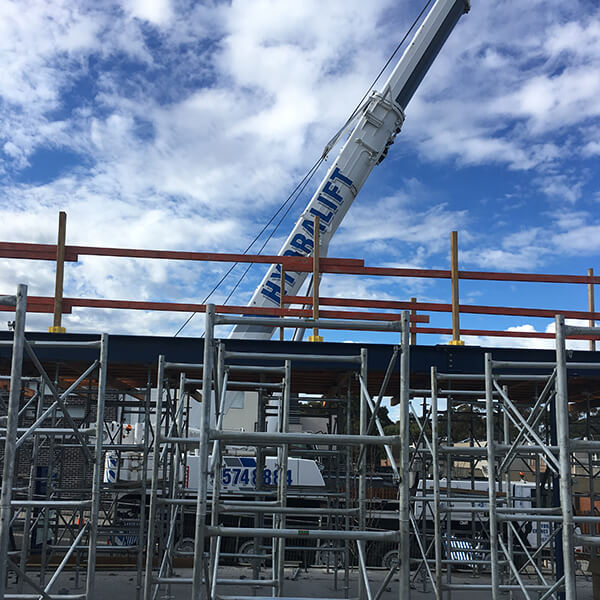
Scope
The scope covers the following :
Unload and position structural steel assemblies
Align structural steel assemblies in appropriate location and provide bracing support
Elements and Performance Criteria
Unload and position structural steel assemblies
To be competent, the user/individual on the job must be able to:
PC1. check for completion of preparatory works and report if any inadequacy observed to superior
or concerned authority
PC2. make safe approach to the location of erection
PC3. interpret hand signals provided by signalman and act according to the same
PC4. keep safe distance to the load when suspended and take necessary actions on instruction
PC5. provide gestures to the signalman if required for exact positioning of the load
PC6. maintain correct body posture when controlling the motion of suspended load by using tag
line
PC7. unload steel units at specified location under close supervision of senior personnel
PC8. use PPEs and relevant safety measures as per standard practice of working at height
PC9. check for completion of preparatory works and report if any inadequacy observed to superior
or concerned authority
PC10. make safe approach to the location of erection
PC11. interpret hand signals provided by signalman and act according to the same
PC12. keep safe distance to the load when suspended and take necessary actions on instruction
PC13. provide gestures to the signalman if required for exact positioning of the load
PC14. maintain correct body posture when controlling the motion of suspended load by using tag
line
PC15. unload steel units at specified location under close supervision of senior personnel
PC16. use PPEs and relevant safety measures as per standard practice of working at height
Align structural steel assemblies in appropriate location and provide bracing support
To be competent, the user/individual on the job must be able to:
PC17. push structural-steel members into final positions, using turnbuckles, crowbars, jacks, and
hand tools under supervision
PC18. position steel sections, assemblies or equipment’s to be erected at right locations within
specified limit of tolerance
PC19. carry out linear measurements to check alignment of erected section or assemblies using
appropriate measuring instruments as per instruction
PC20. carry out bolting at the steel connections as per instruction using appropriate hand tools
PC21. maintain proper housekeeping at workplace to ensure smooth movement of workers and
material
PC22. push structural-steel members into final positions, using turnbuckles, crowbars, jacks, and
hand tools under supervision
PC23. position steel sections, assemblies or equipment’s to be erected at right locations within
specified limit of tolerance
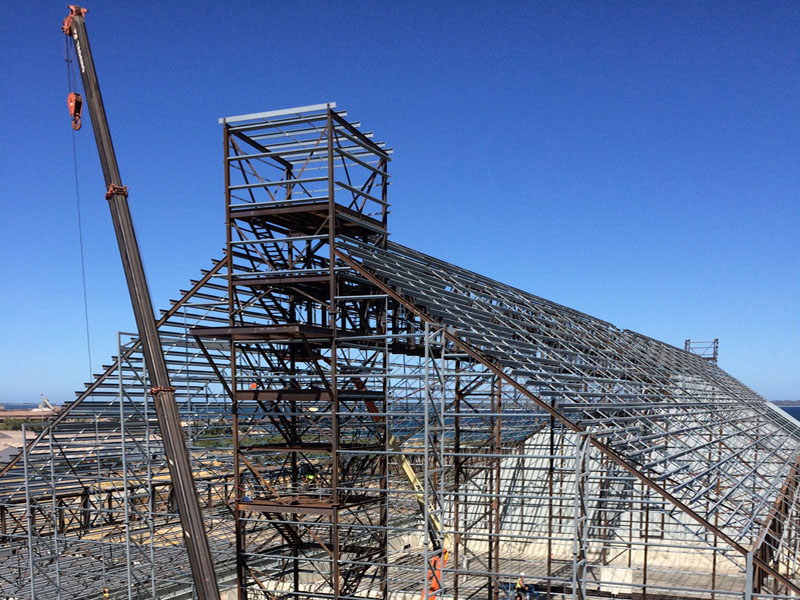
PC24. carry out linear measurements to check alignment of erected section or assemblies using
appropriate measuring instruments as per instruction
PC25. carry out bolting at the steel connections as per instruction using appropriate hand tools
PC26. maintain proper housekeeping at workplace to ensure smooth movement of workers and
material
Knowledge and Understanding (KU)
The individual on the job needs to know and understand:
KU1. standard procedure for construction rigging works
KU2. safety rules and regulation for handling and storing relevant rigging tools, equipment and
materials
KU3. personal protection including the use of relevant safety gears & equipment’s
KU4. service request procedures for tools, materials and equipment’s
KU5. basic principles of measurement, geometry and arithmetic calculation
KU6. conversion of units of linear measurements
KU7. torque tightening of bolts using appropriate hand tools
KU8. different kind of common measuring tools/ instruments and instruments and their respective
uses
KU9. hand tools required to carry out structural steel erection activity and their use
KU10. technique of guiding suspended object trough tag lines to location of erection
KU11. working mechanism of load lifting equipment’s like cranes winches, etc.
KU12. specification of lifting tools and tackles as per load lifting requirement
KU13. interpretation of gestures/ signals by signalman during load lifting work
KU14. how to check alignment of the erected structures
Generic Skills (GS)
User/individual on the job needs to know how to:
GS1. write in one or more language, preferably in the local language of the site
GS2. read one or more language, preferably in the local language of the site
GS3. read various, sign boards, safety rules and safety tags , instructions related to exit routes
during emergency at the workplace
GS4. speak in one or more language, preferably one of the local language at site
GS5. listen and follow instructions given by the superior
GS6. orally communicate with co-workers regarding support required to complete the respective
work
GS7. decide whether his workplace is safe for working and also his work is not creating hazardous
conditions for other
GS8. decide whether the rigging gears are safe to be used for load lifting activities
GS9. plan work and organize required resource in coordination with team member and superior
GS10. complete work as per agreed time and quality
GS11. maintain correct body posture when controlling the motion of suspended load
GS12. resolve any conflict within the team
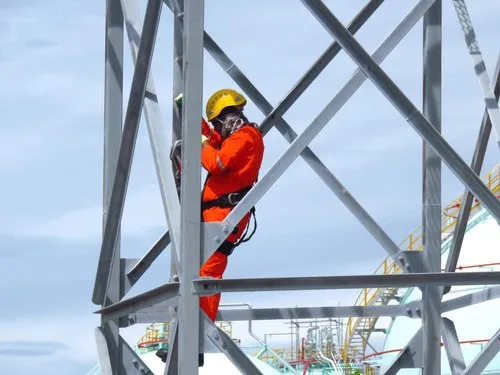
GS13. optimize resources
GS14. minimize wastages
GS15. revert to superior for selection/sorting of materials
GS16. evaluate the complexity of the tasks to and seek assistance and support wherever required
from the superior
GS17. identify and assess how violation of any safety norms may lead to accidents
Erect and dismantle staging for heavy RCC/ steel structures
Description
This unit describes the skills and knowledge required to erect and dismantle staging for heavy RCC/ steel
structures.
Scope
The scope covers the following :
Erect and dismantle staging using heavy steel sections
Elements and Performance Criteria
Erect and dismantle staging using heavy steel sections
To be competent, the user/individual on the job must be able to:
PC1. ensure base of staging is adequately levelled and compacted
PC2. check staging components for their usability
PC3. erect vertical and horizontal members as per schematics and schedule
PC4. lift heavy staging components at height using suitable rigging tools and tackles
PC5. join staging components by bolting using appropriate hand tools
PC6. place structural steel sections on top of vertical members as per specification or standard
practice to form support to the base of structure
PC7. check alignment of staging work and ensure that is within specified tolerance limit
PC8. provide support at necessary locations using appropriate components ensuring stability of
the staging against the load it is designed for
PC9. carry out checks, alteration, re-tightening of members as per requirement or instruction
PC10. erect barricading, safety signage at specific locations as per requirement
PC11. dismantle staging works safely using appropriate tools and tackles and stack the materials at
specified locations as per instruction
PC12. use appropriate PPEs during activity and carry out housekeeping at workplace
Knowledge and Understanding (KU)
The individual on the job needs to know and understand:
KU1. standard procedure for construction rigging works
KU2. safety rules and regulation for handling and storing relevant rigging tools, equipment and
materials
KU3. personal protection including the use of relevant safety gears & equipment’s
KU4. service request procedures for tools, materials and equipment’s
KU5. basic principles of measurement, geometry and arithmetic calculation
KU6. conversion of units of linear measurements
KU7. units of measurements
KU8. different kind of common measuring tools/ instruments and instruments and their respective
uses
KU9. principle of linear measurement
KU10. hand tools required to erect and dismantle staging and their use
KU11. rigging tools required to lift structural steel sections or assemblies and their use
KU12. required nature of base level and compaction required for equipment during lifting
KU13. material components for staging works and their sequential erection according to
schematics
KU14. interpretation of gestures/ signals by signalman during load lifting work
KU15. how to provide additional supports if required and use of staging components in it
KU16. how to check alignment of the erected structures
Generic Skills (GS)
User/individual on the job needs to know how to:
GS1. write in one or more language, preferably in the local language of the site
GS2. read one or more language, preferably in the local language of the site
GS3. read various, sign boards, safety rules and safety tags , instructions related to exit routes
during emergency at the workplace
GS4. speak in one or more language, preferably one of the local language at site
GS5. listen and follow instructions given by the superior
GS6. orally communicate with co-workers regarding support required to complete the respective
work
GS7. decide whether his workplace is safe for working and also his work is not creating hazardous
conditions for other
GS8. decide whether the base of staging is levelled and compacted adequately
GS9. decide whether the rigging gears are safe to be used for load lifting activities
GS10. plan work and organize required resource in coordination with team members and superiors
GS11. complete work as per agreed time and quality
GS12. check alignment of staging work and ensure that is within specified tolerance limit
GS13. use appropriate components to provide support at necessary locations for ensuring stability
of the staging
GS14. resolve any conflict within the team
GS15. determine quantity of material required for rigging works
GS16. optimize resources
GS17. minimize wastage
GS18. revert to superior for selection/sorting of materials
GS19. evaluate the complexity of the tasks to determine if any guidance is required from the
superior
GS20. identify and assess how violation of safety norms may lead to accidents
Work effectively in a team to deliver desired results at the
workplace
Description
This unit describes the skills and knowledge required to work effectively within a team to achieve the
desired results
Scope
The scope covers the following :
Interact and communicate effectively with co-workers, superiors and sub-ordinates across different
teams
Support co-workers, superiors and sub-ordinates within the team and across interfacing teams to
ensure effective execution of assigned task
Elements and Performance Criteria
Interact and communicate in effective and conclusive manner
To be competent, the user/individual on the job must be able to:
PC1. pass on work related information/ requirement clearly to the team members
PC2. inform co-workers and superiors about any kind of deviations from work
PC3. address the problems effectively and report if required to immediate supervisor appropriately
PC4. receive instructions clearly from superiors and respond effectively on the same
PC5. communicate to team members/subordinates for appropriate work technique and method
PC6. seek clarification and advice as per the requirement and applicability
Support co-workers to execute project requirements
To be competent, the user/individual on the job must be able to:
PC7. hand over the required material, tools tackles, equipment and work fronts timely to interfacing teams
PC8. work together with co-workers in a synchronized manner
Knowledge and Understanding (KU)
The individual on the job needs to know and understand:
KU1. own roles and responsibilities
KU2. importance of effective communication and establishing strong working
KU3. risks of a failure in teamwork in terms of effects on project outcomes, timelines, safety at the
construction site, etc.
KU4. different modes of communication, and its appropriate usage
KU5. importance of creating healthy and cooperative work environment among the gangs of
workers
KU6. different activities within his work area where an interaction with other workers is required
KU7. applicable techniques of work, properties of materials used, tools and tackles used, safety
standards that co- workers might need as per the requirement
KU8. importance of proper and effective communication and the expected adverse
KU9. importance and need of supporting co-workers facing problems for smooth

Generic Skills (GS)
User/individual on the job needs to know how to:
GS1. write in at least one language, preferably in the local language of the site
GS2. read in one or more languages, preferably the local language of the site
GS3. read communication from team members regarding work completed, materials used, tools
and tackles used, support required
GS4. speak in one or more languages, preferably in one of the local language of the site
GS5. listen and follow instructions / communication shared by superiors/ co-workers regarding
team requirements or interfaces during work processes
GS6. orally communicate with co-workers regarding support required to complete the respective
work
GS7. decide on what information is to be shared with co-workers within the team or from
interfacing gang of workers
GS8. plan work and organize required resources in coordination with team members
GS9. complete all assigned task in coordination with team members
GS10. take initiative in resolving issues among co-workers or report the same to superiors
GS11. ensure best ways of coordination among team members
GS12. communicate with co-workers considering their educational / social background
GS13. evaluate the complexity of task and determine if any guidance is required from superiors
Plan and organize work to meet expected outcomes
Description
This unit describes the knowledge and the skills required for an individual to plan and organize own work in order to meet expected outcome
Scope
The scope covers the following :
Prioritize work activities to achieve desired results
Organize desired resources prior to commencement of work
Elements and Performance Criteria
Prioritize work activities to achieve desired results
To be competent, the user/individual on the job must be able to:
PC1. understand clearly the targets and timelines set by superiors
PC2. plan activities as per schedule and sequence
PC3. provide guidance to the subordinates to obtain desired outcome
PC4. plan housekeeping activities prior to and post completion of work
Organize desired resources prior to commencement of work
To be competent, the user/individual on the job must be able to:
PC5. list and arrange required resources prior to commencement of work
PC6. select and employ correct tools, tackles and equipment for completion of desired work
PC7. complete the work with allocated resources
PC8. engage allocated manpower in an appropriate manner
PC9. use resources in an optimum manner to avoid any unnecessary wastage
PC10. employ tools, tackles and equipment with care to avoid damage to the same
PC11. organize work output, materials used, tools and tackles deployed
PC12. processes adopted to be in line with the specified standards and instructions
Knowledge and Understanding (KU)
The individual on the job needs to know and understand:
KU1. importance of proper housekeeping
KU2. policies, procedures and work targets set by superiors
KU3. roles and responsibilities in executing the work for subordinates and self
KU4. standard practices of work to be adopted for assigned task
KU5. how to use available resources in a judicious and appropriate manner to minimize wastages or
damage
Generic Skills (GS)
User/individual on the job needs to know how to:
GS1. write in at least one language, preferably in the local language of the site
GS2. list out the assigned works and targets
GS3. read in one or more language, preferably the local language at the site
GS4. read communication from co-workers, superiors and notices from other departments as per
requirement of the level
GS5. speak in one or more language, preferably one of the local language at the site
GS6. listen and follow communication shared by co-workers regarding standard work processes,
resources available, timelines, etc.
GS7. communicate effectively with co-workers and subordinates
GS8. decide on what sequence is to be adopted for execution of work
GS9. plan and organize the materials, tools, tackles and equipment required to execute the work
GS10. complete all assigned task with proper planning and organizing
GS11. arrange or seek help to arrange for material, tools and tackles in case of shortfall
GS12. analyze areas of work which could result in a delay of work, wastage of material or damage
to tools and tackles
GS13. evaluate potential solutions to minimize avoidable delays and wastages at the construction
site
Work according to personal health, safety and environment protocol at construction site
Description
This NOS covers the skill and knowledge required for an individual to work according to personal health,
safety and environmental protocol at construction site
Scope
The scope covers the following :
Follow safety norms as defined by organization
Adopt healthy & safe work practices
Implement good housekeeping and environment protection process and activities
Elements and Performance Criteria
Follow safety norms as defined by organization
To be competent, the user/individual on the job must be able to:
PC1. identify and report any hazards, risks or breaches in site safety to the appropriate authority
PC2. follow emergency and evacuation procedures in case of accidents, fires, natural calamities
PC3. follow recommended safe practices in handling construction materials, including chemical
and hazardous material whenever applicable
PC4. participate in safety awareness programs like Tool Box Talks, safety demonstrations, mock
drills, conducted at site
PC5. select and operate different types of fire extinguishers corresponding to types of fires as per
EHS guideline
PC6. identify near miss , unsafe condition and unsafe act
Adopt healthy & safe work practices
To be competent, the user/individual on the job must be able to:
PC7. use appropriate Personal Protective Equipment (PPE) as per work requirements including:
Head Protection (Helmets), Ear protection Fall Protection, Foot Protection, Face and Eye
Protection, Hand and Body Protection, Respiratory Protection (if required)
PC8. handle all required tools, tackles , materials & equipment safely
PC9. follow safe disposal of waste, harmful and hazardous materials as per EHS guidelines
PC10. install and apply properly all safety equipment as instructed
PC11. follow safety protocol and practices as laid down by site EHS department
PC12. undertake and pass height pass test as per EHS guideline
Implement good housekeeping practices
To be competent, the user/individual on the job must be able to:
PC13. collect and deposit construction waste into identified containers before disposal, separate
containers that may be needed for disposal of toxic or hazardous wastes
PC14. apply ergonomic principles wherever required
Knowledge and Understanding (KU)
The individual on the job needs to know and understand:
KU1. reporting procedures in cases of breaches or hazards for site safety, accidents, and
emergency situations as per guidelines
KU2. types of safety hazards at construction sites
KU3. basic ergonomic principles as per applicability
KU4. the procedure for responding to accidents and other emergencies at site
KU5. use of appropriate personal protective equipment to be used based on various working
conditions
KU6. importance of handling tools, equipment and materials as per applicable
KU7. health and environments effect of construction materials as per applicability
KU8. various environmental protection methods as per applicability
KU9. storage of waste including the following at appropriate location: non-combustible scrap
material and debris, combustible scrap material and debris, general construction waste and
trash (non-toxic, non-hazardous), any other hazardous wastes and any other flammable
wastes
KU10. how to use hazardous material, in a safe and appropriate manner as per applicability
KU11. types of fire
KU12. procedure of operating different types of fire extinguishers
KU13. safety relevant to tools, tackles, & requirement as per applicability
KU14. housekeeping activities relevant to task
Generic Skills (GS)
User/individual on the job needs to know how to:
GS1. write in at least one language, preferably in the local language of the site
GS2. fill safety formats for near miss, unsafe conditions and safety suggestions
GS3. read in one or more language, preferably in the local language of the site
GS4. read sign boards, notice boards relevant to safety
GS5. speak in one or more language, preferably in one of the local language of the site
GS6. listen instructions / communication shared by site EHS and superiors regarding site safety,
and conducting tool box talk
GS7. communicate reporting of site conditions, hazards, accidents, etc.
GS8. not create unsafe conditions for others
GS9. keep the workplace clean and tidy
GS10. identify safety risks that affect the health, safety and environment for self and others
working in the vicinity, tackle it if within limit or report to appropriate authority
GS11. assess and analyze areas which may affect health, safety and environment protocol on the site
GS12. ensure personal safety behavior GS13. respond to emergency





